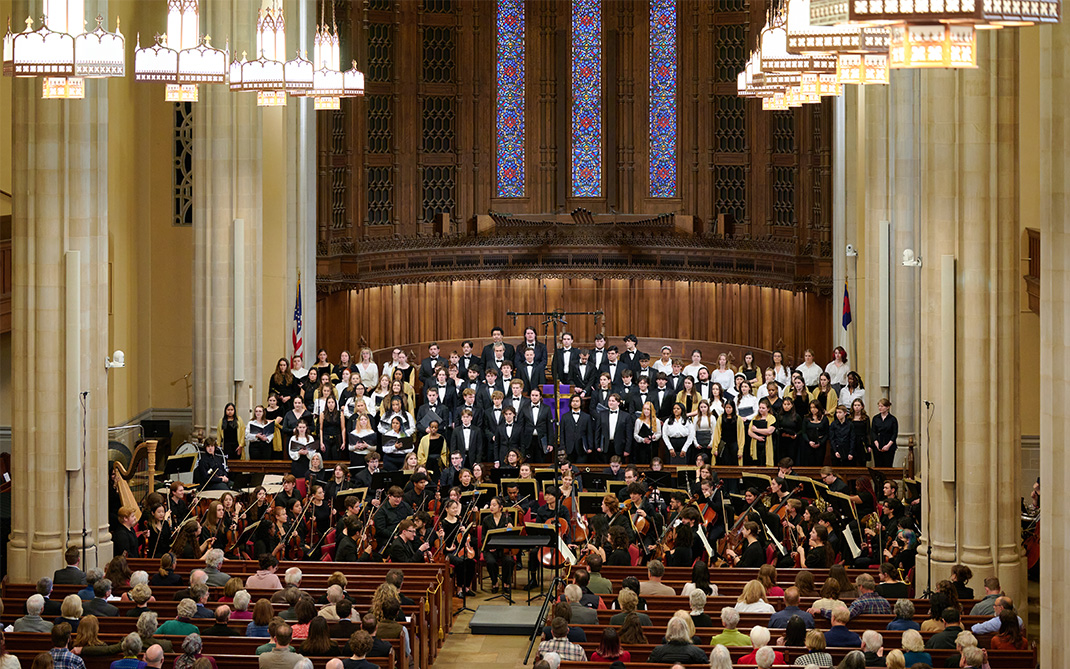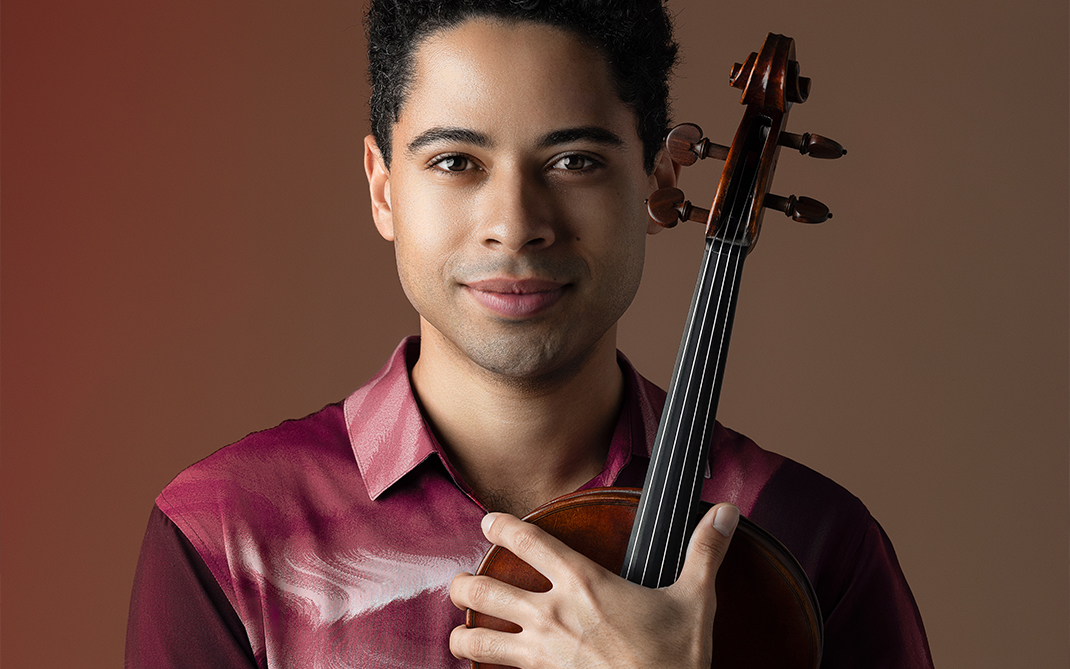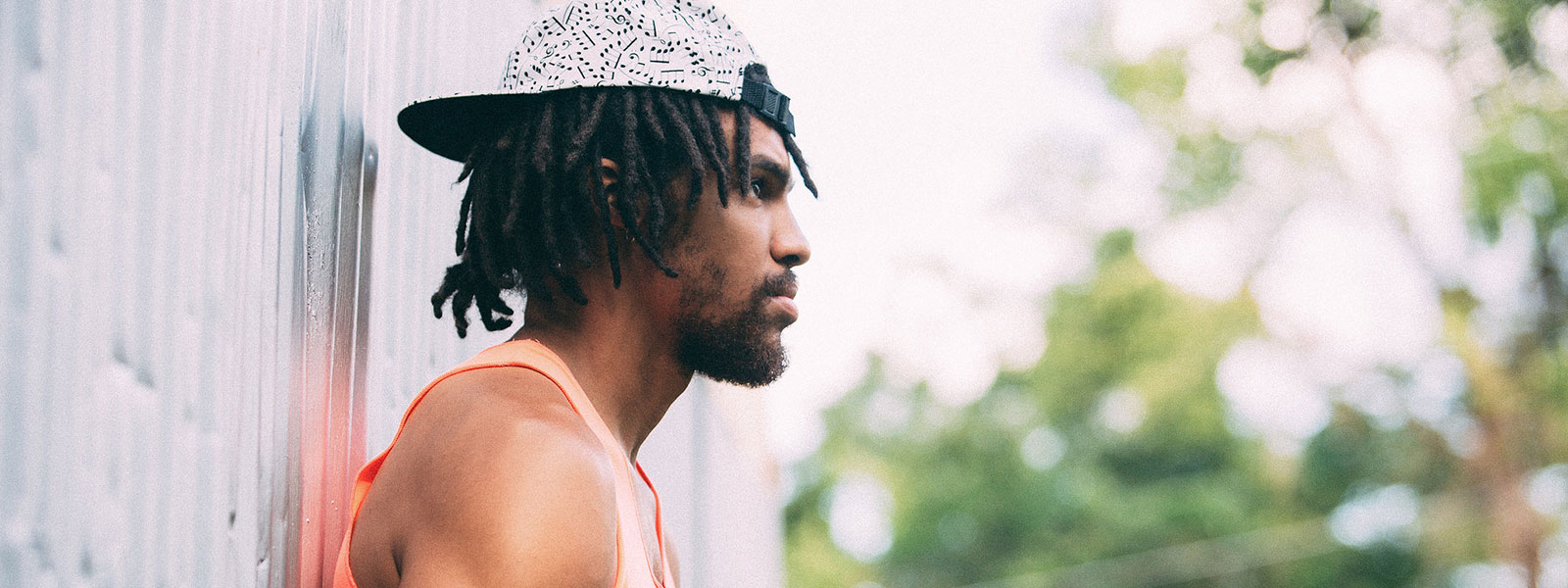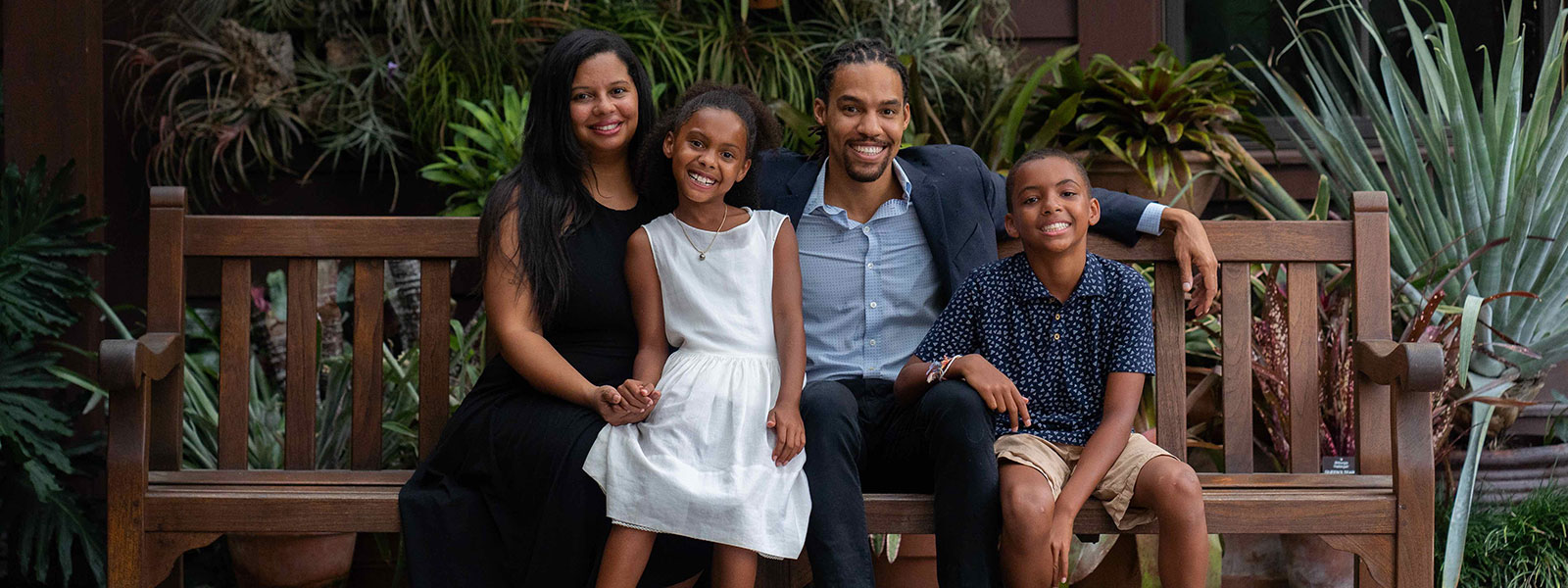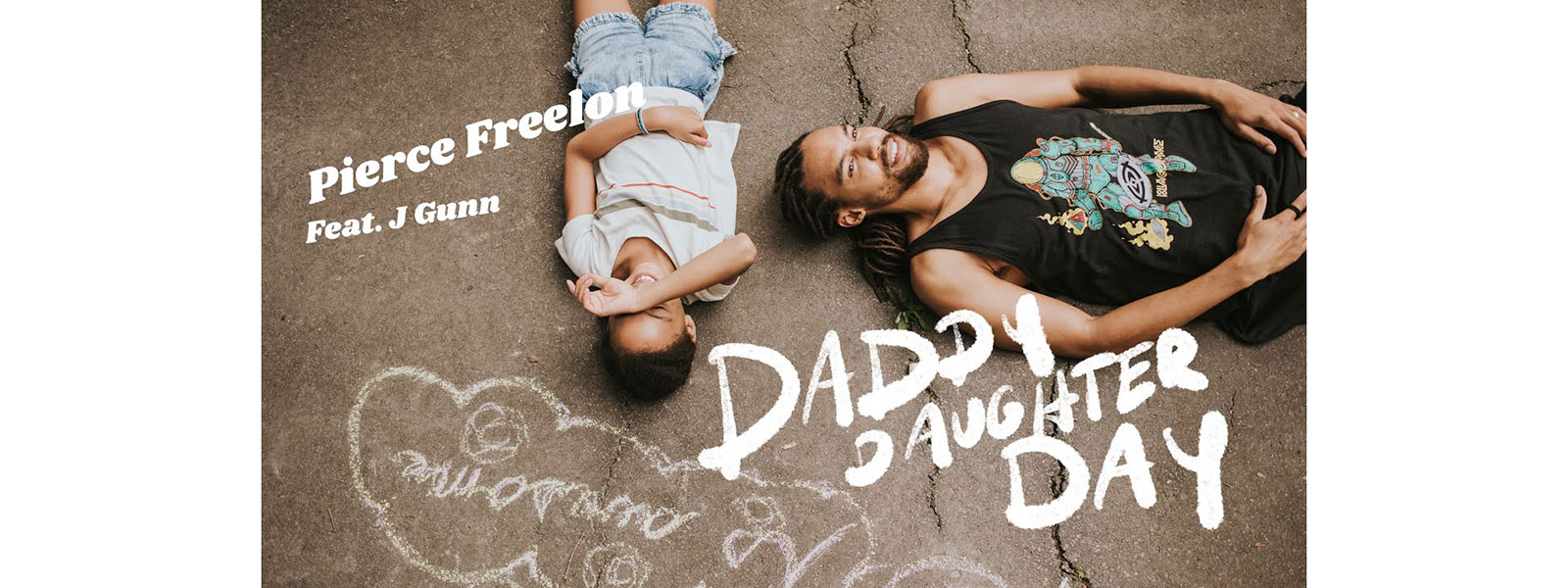Artist As Leader: Pierce Freelon
Pierce Freelon is a composer, musician, producer and filmmaker who recently released his debut children’s album “D.a.D.” The album features Pierce’s 10-year-old daughter, Stella, and includes songs such as “Daddy/Daughter Day,” a hip-hop ode to family playfulness and closeness, and “My Body,” an equally celebratory lesson about body autonomy and consent.
He is the founder of Blackspace, an Afrofuturist digital makerspace in Durham, NC and the co-founder of “Beat Making Labs,” an Emmy Award-winning web series produced by PBS. He is also the co-director, writer and composer of “The History of White People in America,” a series of 16 animated short films, the first of which premiered in 2018 at the Tribeca Film Festival. The first three shorts can be seen on PBS’ World Channel.
Pierce has also in recent years thrown his hat into the political ring, having run to be mayor of Durham and for a seat in the North Carolina State Senate. In August of 2020, Governor Roy Cooper appointed him to fill a vacant seat on the Durham City Council.
In this interview with Rob Kramer, Pierce reflects on the leadership legacy left him by his artist parents — his father was the renowned architect Philip Freelon and his mother is Grammy-nominated jazz vocalist Nnenna Freelon — and by the giants in his cultural ancestry. He explains how he has absorbed their lessons to beat his own path of artistic leadership.
Choose a question below to begin exploring the interview:
- How do you see art and social justice intersecting?
- Do you see yourself as a leader?
- Did you always feel like you had a sense of leadership, or was there a moment when you noticed the change from being an artist to being an artist leader?
- What was it about being an artist that was a plus or a minus as you pursued a career in politics?
- Do you think it’s important that more artists run for office?
- Epilogue
Rob Kramer: How do you see art and social justice intersecting?
Pierce Freelon: Oh, that’s a great question. I think of my dad, who passed away last summer. He was an architect and a photographer and creative guy, and one of the last things he passed on ... .
Actually, to back up even a little more, both my parents are artists. My mother is a jazz vocalist; my dad is an architect. I talk about my dad a lot because I’m still grieving and mourning his passing. It’s still fresh on my mind. When people ask me things that remind me of him, I just have to bring his name up, if I’m being present and authentic to that grief. Grieving is sad, but it’s also just a completely normal and creative process of dealing with change. I just want to lift his name up and offer you and whoever else may be listening to this conversation some of the gems that he gave me as a kid.
One of the last things he said before he passed away was, “Art is the most powerful force in the universe.” I think he was talking about creation. Being creative is a powerful practice. You’re birthing something into existence. Many religious and spiritual practitioners that believe in a creator … that’s a common theme that you hear in a lot of cultures throughout the world, that some being or some essence or some power has the power to create. With all due respect to atheist and agnostic folks who may not hold that belief, I just wanted to acknowledge that that’s a widely held reverence, the ability and capacity to create something.
When we make art ... We are tapping into that very ancient, very sacred, very world-renowned and revered practice of being a creator ourselves and birthing something, grabbing something out of the ethers and birthing it into existence from nothing.
My dad and I often talked about how when we make art, when we have an idea and we manifest a thing, we bring it into existence. We are tapping into that very ancient, very sacred, very world-renowned and revered practice of being a creator ourselves and birthing something, grabbing something out of the ethers and birthing it into existence from nothing.
One of the most fascinating spaces for me as an artist where I’ve seen this marvelous practice — and I mean marvel in the true sense of the word. It’s just, “What? How? Whoa!” It’s awe-inspiring. Your jaw’s on the floor — is during a cipher. A cipher is like a circle of rappers and poets and singers. We used to do a cipher before COVID every single Friday in downtown Durham, run by high school students and including community Duke students, North Carolina Central students, homeless folks, local people, tourists, high schoolers, elders, children, a very diverse group. The whole cipher, the whole experience is a communal expression that is rooted in improvisation, where the rappers and lyricists and poets and beat-makers and scatters and beatboxers are literally conjuring ideas and presenting them in real time for two hours. We’d do this from 9:19 to 11:00 pm every single Friday, pre-COVID.
The ideas that people come up with, the moments of sheer genius, creativity and ingenuity, are just awesome. There’ve been several times where I’m just baffled. “How did this six-year-old or 60-year-old come up with that line? How did they conjure that?” It’s beautiful and powerful and spiritual, going back to tying that capacity to produce things out of nothing to a sense of a higher calling or a higher being or a higher abundant capacity within all of us to be creators. It’s something that I think my dad understood very well when he said, “Art is the most powerful force in the universe.” Now that he’s gone, I think about that often because I see it. There’s a lot of forces in the universe: gravity, electromagnetism. There’s a lot of forces out there, but art is a powerful one, especially for us humans.
Earlier this year, I released a children’s music album where I sample a conversation with my dad. It was about maybe 10 days before he passed away, July 1st, I think, 2019. He was lying in his bed in a home that he designed — he was an architect. He designed his own home, his own tomb — and it was a really beautiful moment where he’s talking to my children, his grandchildren, about the power of art. He talks about perception. He says, “Sometimes it’s nice to just listen, to just sit and listen and perceive and receive inspiration or direction or art. Receive that, be open to receiving it and then create with it. And if you have the power to shift someone’s day or make someone smile or build something beautiful, that’s really powerful.” He was just reminding kids that when you’re doodling in your notepad or writing in your journal or coding on your computer, you have an awesome opportunity there to tap into something cosmic and grand.
I’m going to go ahead and bring this full circle back to your question, because that may have sounded somewhat tangential to the question about social justice. I think for people who have empathy and who care and who want to bend the moral arc of the universe towards justice, as King put it, art is a powerful tool in the arsenal of the organizer or the activist, the community leader. There has been no social justice movement in the history of at least the Black freedom struggle … I don’t know about other people’s struggles — I’m an African American Studies professor and lecturer, and I know a lot about the Black freedom struggle — and I know when Black folks are fighting against oppression, they wield art like a battle-ax and they swing it with reckless abandon. Whether that’s been the civil rights movement with freedom songs or the anti-lynching movement with music like “Strange Fruit” and “Mississippi Goddam,” whether it’s been visual art from Henry O. Tanner, poetry from Maya Angelou or Kendrick Lamar, our social justice movements have been inextricably linked to creative cultural production. I think that that sacred bond is tied to the power that art has to transform culture and society.
Rob: Do you see yourself as a leader?
Pierce: Yeah, I do. I do see myself as a leader. I grew up being nurtured by many leaders, and I see myself and them reflected through the work that I do and the way that I’m received in communal spaces and in my intimate private spaces, in my own household with my kids and my wife. I recognize that as a special superpower and privilege.
There’s a woman, a Black woman named Omisade Burney-Scott, who’s in this Durham community.
Rob: She’s fantastic. I know Omisade.
Pierce: Oh, you know Omi? Yeah, Omi is one of my mentors and someone who’s poured her light into me, and I receive it with grace and gratitude. People like Baba Chuck Davis who passed away a few years back in 2017. He’s another community leader who has poured his light and positive energy and wisdom into me. I used to live on the same street with Dr. John Hope Franklin, who was a preeminent historian and emeritus professor at Duke. He’s poured his light and abundance and positive energy into me. And then there’s people I’ve never met, folks who I’ve read, Audre Lorde and Pauli Murray, who have through their art and their legacy in their writing, in their poetry, poured light into me.
So I’m a vessel for all of this, for all of their collective energies, just like my parents poured into me. Obviously my parents had more intimate access to me than Pauli Murray, for example. Then I’ve got my biological ancestors who through my parents and genetics and through their ideas that are passed on from one generation to the next have poured into me.
The reason I brought up Omi is because she talks about, “You’ve got your biological line of ancestors, and then you’ve got your cultural through-line,” is how she puts it. “Who’s in your cultural through-line of ancestors?” I count folks like Harriet Tubman in my cultural through-line of ancestors. Frederick Douglass and Ida B. Wells and Ella Baker are in my cultural through-line. And Pauli Murray. A lot of people in Durham. Ann Atwater. There’s so many wonderful people in this community and nationally and internationally that I’ve drawn inspiration from and who I have attempted to emulate and study.
So, absolutely, I feel when I’m walking with their collective light and finding ways to share it, I see myself in the legacy of their leadership, when I’m just being, creating, sharing, engaging with folks, carrying them around with me.
So, absolutely, I feel when I’m walking with their collective light and finding ways to share it, I see myself in the legacy of their leadership, when I’m just being, creating, sharing, engaging with folks, carrying them around with me. It’s not so much an intentional thing like, “I’m going to go out today and be a leader.” It’s something that I’ve observed over time where, in observing a public interaction in community, someone will pull me to the side and say, “Wow, just hearing you talk to that young man was so powerful.” And I’m just like, “Oh, we were just having a convo. I wasn’t trying to be anything special in that moment. I was just listening and sharing.”
Rob: Do you think you came into the world wired that way? Did you always feel like you had a sense of leadership, or was there a moment when you noticed the change from being an artist to being an artist leader?
Pierce: I don’t know if I would say I changed at some point. I think I’ve just always been about my principles, and that in itself is a form of leadership. Being a person of integrity and focus and drive, those are leadership qualities. It took some outside recognition for me to acknowledge it as such, because for me it was just a part of the way that I was raised in my value system, but then people were like, “Oh, when you did this or you did that, that was leadership.” I’m like, “Oh, I thought that was just being a decent human being.”
In a world where folks aren’t decent and where people can be cruel and petty, just being decent is elevated to some unique quality in our culture. It shouldn’t be that way.
Just by example, literally yesterday, I was talking to a friend. I’m part of this collective of children’s music artists, and I was calling a friend to ask her for her memory of how our collective got started. We started after George Floyd was killed, and we came together to see how we can address structural racism in children’s music. We all came to this collective in our own way. I have my own story and my own path into joining this collective.
I reached out to this woman to say, “Hey, how did you get involved in the collective?” We talked about it and discovered interestingly that she felt the narrative that was forming publicly about how the group got founded was revolving around this white man and his experience as the catalyst for this group coming together. It was interesting, because I could see the ways in which patriarchy and white supremacy were converging to erase the groundwork that Black artists and women had been doing but now that a similar experience happens with a white guy, it’s all of a sudden relevant.
We were just talking about that and talking about patriarchy, and at the end of the conversation she was like, “Wow, thank you for listening and hearing me and engaging with me.” And I’m like, “What do you mean, thank you? It was a mutual exchange. We had a great conversation!” And she was like, “No, that was leadership. That’s what I love about you, having you in the space.” She told me, “I’ve never had a conversation with a man who was able to recognize patriarchy and say that he would be an ally.”
What kind of world are we living in where those types of things aren’t basic human courtesy? It’s bizarre, but I think that’s the way structural oppression works. It works to invisibilize and reduce and belittle the humanity of folk. When you see the full humanity of a person and engage them and see them and uplift them and cherish them, then it’s like, “Whoa, that’s leadership!”
But I don’t know. As I’m saying it, I’m questioning, is that leadership? Or is that just being kind and empathetic and generous?
Rob: Of the many artists we’ve interviewed for this series, you’re the only one to have gone into politics. You’re currently on the Durham City Council, but you also ran for mayor and state senate. What was it about being an artist that was a plus or a minus as you pursued a career in politics?
Pierce: Well, like many things, stuff can be pluses and minuses. I see a lot more pluses about the intersecting worlds of art and politics. One such would be … I mean, this is just a really generic example, but my hair. I have locks, and that’s an unconventional hairstyle for a politician to have. My very first campaign headquarters was in the home of a local centurion. She’s now 103. Her name is Mozella McLaughlin. Miss Mac is what I called her growing up. She used to babysit me. She lives in the neighborhood right off North Carolina Central University’s campus.
She gave me an old — not gave me, I rented it — an old room in her house, which became my campaign headquarters. She would ask me every day when I came in, “Pierce?” I’m like, “Yeah, Miss Mac.” She’s like, “When are you going to cut your hair?” [He laughs.] And I would be like, “Uhhh, well, Miss Mac, this is an important part of my identity. It’s important to me that I come to politics with authenticity. I’m not trying to conform and stuff myself into a box just because it’ll make some folks comfortable.” And she’s like, “Yeah, I get it, I get it. But when are you going to cut your hair?” [Laughs]
What I took from that is that, metaphorically or realistically, I will be an uncommon thing, an unfamiliar sight to a lot of people when they think about what a politician is and how they get into public service and what they look like and what they should be about. My hair is part of it, but it’s also the fact that I’m a musician and other aspects of my personality and profile and biography that are really uncommon for most politicians.
It’s like a square peg in a round hole, and there are other folks who celebrate that background specifically because our politics are so dysfunctional and archaic in some ways and a breath of fresh air would be a welcome change to a static environment, culture and atmosphere.
I think that there’s a certain segment of folks like Miss Mac who will look at that with skepticism and say, “I don’t recognize it. What is this? I’ve never seen this.” It’s like a square peg in a round hole, and there are other folks who celebrate that background specifically because our politics are so dysfunctional and archaic in some ways and a breath of fresh air would be a welcome change to a static environment, culture and atmosphere.
There are some elders who are going to be like, “What is he doing? Go get the Obama cut. Get you a Caesar.” That’s what we call that. It’s ironically titled Caesar, but Black people call it the Obama haircut. There’s a little insight for you all. But there are also some people who are like, “I’m so glad that a young Black man with locks and a tattoo is going to be showing up and leading just by being.” Again here, not doing anything special, but when I show up in the community and kids see something that looks and feels like them, then they can potentially see themselves in that same role. And that also has an impact that I think is really important.
Rob: Do you think it’s important that more artists run for office?
Pierce: Absolutely. I was using the hashtag #ArtistInOffice when I was running for mayor, and we seriously considered that as a slogan. We didn’t end up adopting it formally but continued to use it with a lot of our social-media posting. We talked a lot about improvisation and being creative and thinking outside the box, and those are things that are necessary for folks who have power. Otherwise we’re going to keep getting the same old thing that we’ve been getting, and there are some things that are quite broken and need some radical change. I think artists have a unique capacity to be able to be visionaries and to imagine. That’s literally imagination.
When you tell a kid, “Go outside and play.” “What am I going to do?” “Use your imagination!” It’s something people tell kids to try to keep them busy, but literally let’s figure out this healthcare situation. What are we going to do about policing and violence in our community? Well, most people are going to say, let’s use one of these two or three prescribed things that we know to be effective or not effective based on what studies you read. And it’s like, “Come on, you all. Use your imagination. What else is possible?” That’s a practice that should be required of every public servant.
Certainly when I go back to my ancestral through-line — my cultural through-line of my ancestors, the Harriet Tubmans, the Ida B. Wellses, the Ella Bakers in my cultural through-line — these were imaginative Black revolutionary women. They didn’t say, “Oh, why don’t we have an upgrade to the slave cabins?” They said: “No, we’re going to do something radically different about lynching. We’re going to do something radically different about segregation, about the institution of enslavement. We’re going to take a hard left, not working within the system that we currently have to marginally improve life circumstances for a select few individuals. We’re going to create something brand new.”
... to be visionary means to see that something else is possible and to manifest, to be creative, to put your words into action and to build that other thing. I think that’s what every person in my cultural ancestral through-line has done ... And those are the people that I carry with me.
When we reflect back on how innovative and visionary they were, it’s hard for us to imagine because we’ve inherited the benefits and the fruits of that imagination being put into practice. But at the time, at the time, she sounded crazy. “How are you possibly going to do X?” Maybe that’s something she didn’t even have all the nuanced answers to, but to be visionary means to see that something else is possible and to manifest, to be creative, to put your words into action and to build that other thing. I think that’s what every person in my cultural ancestral through-line has done, from Ann Atwater to Pauli Murray to John Hope Franklin to Harriet Tubman. And those are the people that I carry with me.
Epilogue
Moving through the world with a sense of connection to the past, of the present moment’s opportunity for social change and of the potential for future evolution, Pierce Freelon carries the timeless qualities of a family-oriented, people-driven artist leader. Lessons from our time with Pierce include:
- Have a guidepost. For Pierce it is his father’s reminder that, “Art is the most powerful force in the universe.” What energizes you to be an artist leader?
- Know what is sacrosanct to you. Creativity may be a spiritual practice, an outlet or just plain fun. However, knowing your non-negotiable principles is what informs and motivates your work.
- Consider your own legacy. One way to consider how to shape your leadership journey is to recognize lineage and ancestry. Where did you come from, and how does that inform what you will do with your remaining time on earth?
- Have integrity. The quality of your relationships, your efforts and your impact are shaped greatly by the choices you make. Only you have ultimate power over your integrity.
- Truly see others. As Mother Theresa says, “There is more hunger for love and appreciation in this world than for bread.” Regularly demonstrate your genuine interest in others.
